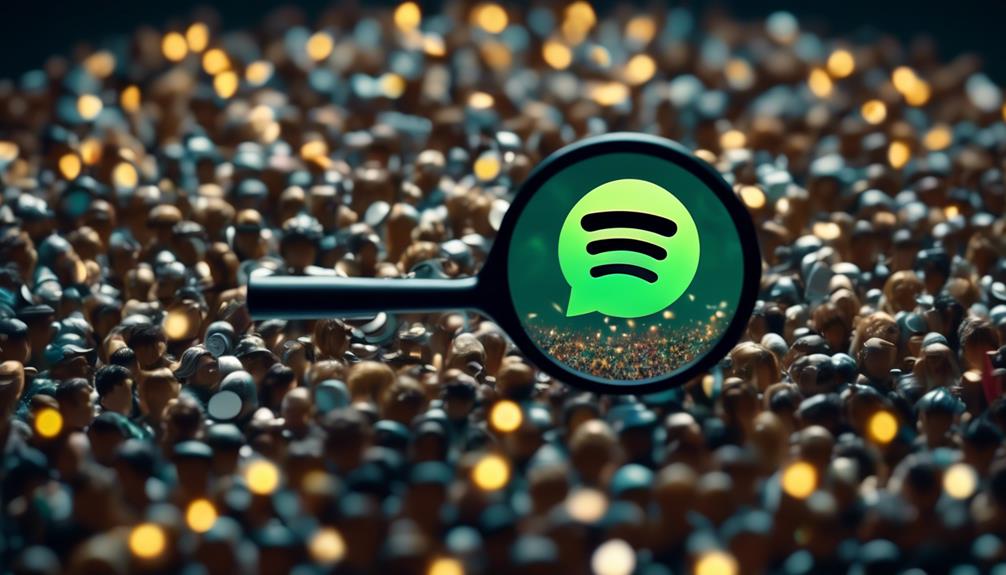
Is 1000 Spotify streams good?
You’re probably sitting there, convinced that 1000 Spotify streams is akin to having a gold record hanging on your wall. After all, it’s a grand number which sounds pretty impressive.
Don’t get me wrong, it’s a start and every stream counts, but is it really a monumental achievement you should be celebrating? Is it a benchmark that guarantees your success in the music industry?
The answer might surprise you, and it’s certainly worth considering as we explore the true significance of 1000 streams on Spotify.
Key Takeaways
- Reaching 1000 streams on Spotify is an important milestone for artists, as it signifies the potential for stream monetization and a thriving music career.
- Obtaining 1000 streams validates the creativity and resonates with the audience, boosting confidence and affirming that the artist is on the right track.
- Reaching 1000 streams increases the chances of playlist placements and discovery by more Spotify users, leading to greater exposure and potential growth.
- Streaming metrics analysis and audience engagement strategies are crucial for understanding audience preferences, building relationships with listeners, and fostering a sense of community and loyalty for increased streams.
Understanding Spotify’s Payment System

To fully grasp how Spotify compensates artists, it’s crucial to delve into their unique payment system. This process isn’t as straightforward as you might think. It’s a complex algorithm based on royalty calculations and stream monetization.
Spotify doesn’t pay artists per stream. Instead, it uses a pro-rata model to distribute royalties. How does this work? Firstly, the total revenue Spotify receives from subscriptions and ads is pooled. Next, Spotify calculates the total number of streams for all songs. Your royalty is then determined by the proportion of your song’s streams to the total streams.
While this may seem fairly equitable, the reality is that major artists with millions of streams often absorb a significant part of the revenue pool. This leaves lesser-known artists with a much smaller slice of the pie.
Stream monetization is another key factor. It’s not just about the number of streams; the country where the stream originates also matters. Streams from countries with higher subscription rates generate more revenue.
The Significance of 1000 Streams
Given this understanding of Spotify’s payment system, you might now be wondering what the real value of getting 1000 streams on this platform is. The significance of 1000 streams goes beyond mere numbers. It’s an initial milestone in your journey towards stream monetization and a testament to your growing fanbase.
The emotional impact of reaching 1000 streams:
- It validates your creativity, the labor you’ve put into your music, and the potential for a thriving career in the music industry.
- It demonstrates your music’s resonance with the audience, stirring an excitement that fuels your passion.
- It can boost your confidence, affirming that you’re on the right track and inspiring you to strive for higher goals.
Securing 1000 streams can also positively affect your playlist placements, increasing the chances of your music being discovered by more Spotify users. This could lead to a snowball effect, where the popularity of your music grows exponentially. But remember, while 1000 streams is a significant step, it’s just the beginning. The path to stream monetization is complex and requires continued effort, innovation, and engagement with your audience.
Demystifying Audience Engagement

Understanding and mastering audience engagement on Spotify can significantly boost your streaming numbers and help you connect more deeply with your listeners. This process begins with a Streaming Metrics Analysis, which provides a detailed picture of your audience’s listening habits, preferences, and engagement levels.
This data-driven approach allows you to identify patterns, make informed decisions, and create Audience Retention Strategies. For instance, you might notice that your streams peak during certain times of the day or that a specific song garners more attention. Use this information to your advantage by scheduling releases strategically and promoting your most popular tracks.
Engagement isn’t just about numbers, though. It’s also about building relationships with your listeners. Respond to comments, share behind-the-scenes content, and show appreciation for your fans. This fosters a sense of community and loyalty, which can lead to increased streams and more meaningful interactions.
Comparing Spotify to Other Platforms
When you stack Spotify up against other platforms, it’s essential to scrutinize the unique features, audience reach, and monetization opportunities each one offers.
As you navigate the Platform Features Comparison, you’ll find Spotify’s personalized playlists and social sharing capabilities unrivaled. However, other platforms might outshine Spotify in the Streaming Quality Debate.
Consider the following:
- Apple Music
- Offers a higher bitrate, potentially providing a superior listening experience.
- Its audience is mainly iOS users, which could narrow your reach.
- YouTube Music
- Excels in video content, an engaging format that Spotify lacks.
- Algorithmically generated playlists aren’t as refined, which could impact your exposure.
- Tidal
- Promises lossless, high-fidelity sound quality – a win for audiophiles.
- It’s user base is significantly smaller, which might limit your audience.
It’s crucial to remember that each platform has its strengths and weaknesses. Your task? Determine where your music fits best and align your streaming strategy accordingly. Remember, it’s not just about the number of streams, but also about reaching the right audience and maximizing your potential to earn.
Evaluating Your Streaming Success

In assessing the success of your streaming efforts, it’s not solely about counting streams; instead, you need to delve into specific metrics and understand their implications for your music career. Stream Analytics can provide a wealth of information beyond just raw numbers. It can help you identify patterns in listening behavior, geographic distribution, and even peak listening times. This data is invaluable for planning tours, targeting advertisements, and tailoring your promotional efforts.
Another crucial metric to consider is fan retention. If you’re constantly gaining new listeners but failing to keep them engaged, your growth may be sustainable. Fan retention measures how many of your listeners return to your music after their first stream. High retention indicates that your music resonates with listeners and encourages loyalty.
Innovation in music isn’t just about creating new sounds. It’s also about understanding and leveraging the data available to you. By focusing on metrics like Stream Analytics and Fan Retention, you can gain a comprehensive understanding of your streaming success. It’s not just about counting streams, but making those streams count for your music career.

